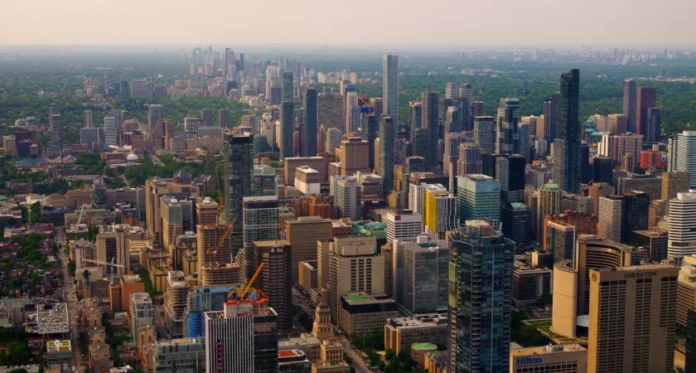In the wake of the pandemic, remote work has reshaped real estate dynamics.
The global real estate landscape has undergone a profound transformation in the aftermath of the COVID-19 pandemic. This comprehensive exploration delves into the nuanced market trends shaping the post-pandemic era. From shifts in housing preferences to the integration of cutting-edge technologies, understanding these trends is crucial for individuals, investors, and industry professionals alike.
Remote Work Impact
In the wake of the pandemic, the allure of urban living has given way to a surge in demand for suburban properties. The need for spacious homes with dedicated workspaces has redefined the concept of the ideal home. Conversely, urban areas experienced a temporary dip in demand as remote work reduced the necessity for proximity to traditional office spaces.
- Suburban Migration: The rise of remote work has led to a surge in demand for suburban properties as individuals seek larger homes with dedicated workspaces.
- Urban Challenges: Some urban areas experienced a temporary decline in demand as remote work reduced the need for proximity to offices.
Shifts in Housing Preferences
The pandemic prompted a reassessment of housing preferences, emphasizing the creation of adaptable living spaces. Homes with designated office areas took center stage as remote work became a permanent fixture. Simultaneously, the desire for properties featuring outdoor amenities experienced a surge, emphasizing the importance of gardens, balconies, and terraces in the new definition of an ideal home.
- Home Office Space: Increased remote work has elevated the importance of home office spaces, with buyers and renters prioritizing properties that accommodate flexible work arrangements.
- Outdoor Amenities: Properties with outdoor spaces, such as gardens, balconies, or terraces, gained popularity as people sought ways to enjoy outdoor living within their homes.
Technology Integration
Technology emerged as a linchpin in the real estate industry’s response to the pandemic. Virtual tours and 3D models became indispensable tools, offering prospective buyers the ability to explore properties remotely. Digital transactions, from online contract signings to virtual notarizations, became the norm, streamlining and expediting traditionally paperwork-intensive processes.
- Virtual Tours and 3D Models: Virtual tours and 3D models became crucial in property marketing, allowing buyers to explore homes remotely.
- Digital Transactions: Contactless transactions and digital platforms gained prominence for property sales and leasing processes.
Supply Chain Challenges
The real estate sector grappled with disrupted supply chains. Construction projects faced delays due to shortages and logistical challenges, impacting the availability of housing. This supply chain fragility highlighted the importance of resilience and innovative solutions to ensure a steady flow in the face of unforeseen challenges.
- Construction Delays: The real estate sector faced challenges due to disruptions in the supply chain, causing delays in construction projects and impacting housing availability.
Affordability Concerns
Despite historically low interest rates, the economic uncertainties stemming from the pandemic introduced affordability concerns for prospective buyers. Job market fluctuations and financial insecurities prompted a meticulous evaluation of budgetary considerations, challenging the notion that low interest rates alone guarantee widespread affordability.
- Economic Uncertainty: Despite low interest rates, economic uncertainty has affected affordability for some potential buyers, influencing their decision-making processes.
Rise of Secondary and Tertiary Markets
A noteworthy trend post-pandemic has been the renewed interest in secondary and tertiary markets. Homebuyers and investors expanded their horizons beyond major urban centers in pursuit of affordability and untapped potential. This shift not only diversified investment portfolios but also stimulated growth in emerging markets, presenting novel opportunities for those willing to explore unconventional real estate landscapes.
- Increased Interest: Secondary and tertiary markets experienced increased interest as buyers sought more affordable options outside major urban centers.
- Investment Opportunities: Investors and developers explored opportunities in these markets, anticipating growth potential.
Sustainable and Wellness Features
The pandemic heightened awareness of health and well-being, influencing a surge in demand for homes with sustainable and wellness-centric features. Energy-efficient homes, green building certifications, and properties with a focus on eco-friendly designs became integral aspects of the new housing paradigm.
- Focus on Health and Well-being: The pandemic heightened awareness of health and wellness, leading to increased demand for homes with features like air purification systems, green spaces, and home gyms.
- Eco-friendly Design: Sustainable and energy-efficient homes gained popularity as environmental consciousness became a significant factor in decision-making.
Government Stimulus and Support
Governments worldwide responded to the economic challenges posed by the pandemic with targeted stimulus measures to revitalize the real estate market. Tax credits, subsidies, and incentives for first-time homebuyers were introduced to stimulate demand and support economic recovery. This collaborative approach between governments and the real estate sector underscored the pivotal role of housing in fostering economic resilience.
- Incentives: Various governments worldwide introduced incentives to stimulate the real estate market, including tax credits, subsidies, and measures to support first-time homebuyers.
Rental Market Dynamics
The dynamics of the rental market underwent a paradigm shift as remote work and changing demographics influenced tenant preferences. Urban rental markets experienced adjustments as tenants sought affordability and larger living spaces in suburban settings. The demand for flexible lease terms and furnished properties surged, reflecting the adaptability required in a dynamic post-pandemic rental landscape.
- Urban Rental Adjustments: Some urban rental markets experienced a shift as tenants sought more affordable options or larger spaces in suburban areas.
- Flexible Lease Terms: Increased demand for flexible lease terms and furnished properties became notable trends in the rental sector.
Adaptation in Commercial Real Estate
Commercial real estate faced its own set of challenges and transformations post-pandemic. The demand for flexible workspaces and coworking environments surged as businesses embraced hybrid work models. Simultaneously, the repurposing of commercial spaces gained momentum, showcasing the industry’s resilience in transforming challenges into opportunities.
- Flexible Workspaces: The demand for flexible office spaces and coworking environments increased as businesses adapted to hybrid work models.
- Repurposing of Commercial Spaces: Some commercial properties underwent repurposing to meet changing demands, such as converting office spaces into residential units or mixed-use developments.
A Reshaped Terrain
As we navigate the post-pandemic real estate terrain, it becomes evident that the sector has not merely adapted but evolved. Navigating this landscape requires a keen understanding of these trends, a proactive approach to innovation, and an unwavering commitment to meeting the evolving needs of individuals and communities alike.
In embracing the changes brought forth, the real estate industry has the opportunity not only to recover but to emerge stronger and more resilient as it is today. As such, this multifaceted post-pandemic real estate landscape reflects the evolving needs and preferences of buyers, renters, and investors in response to the challenges and opportunities brought about by the global health crisis.














